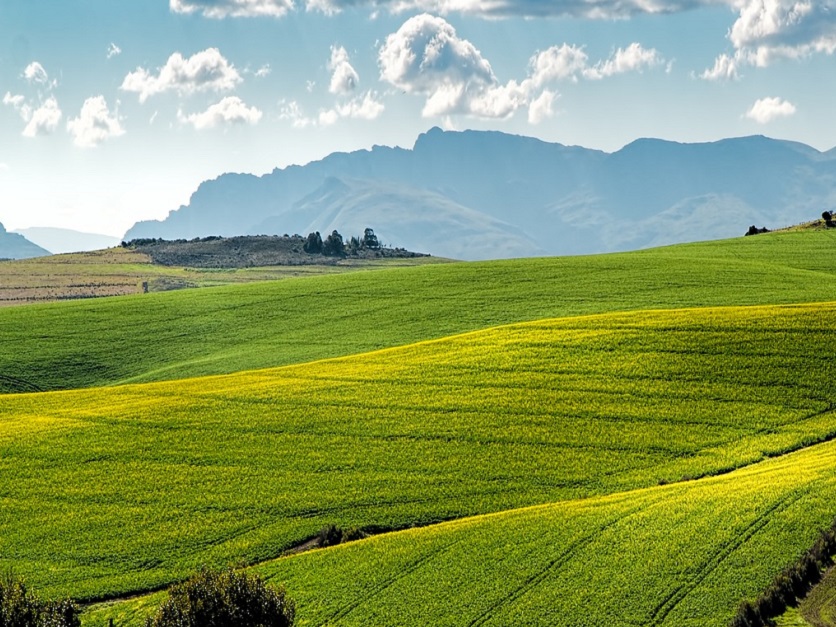Landowners will have until July 23 to apply for the Conservation Reserve Program general signup. USDA announced the deadline Tuesday. The signup opened in January, but USDA announced in April that it would increase payment rates and offer other financial incentives in a bid to get 4 million more acres enrolled in the program.
Separately, the Farm Service Agency says it will take applications from July 12 to Aug. 20 for the CRP Grasslands program.
“Bottom line, CRP now makes more financial sense for producers while also providing a bigger return on investment in terms of natural resource benefits,” said FSA Administrator Zach Ducheneaux.
But, but, but: The National Grain and Feed Association is concerned that a 10% increase in payment rates that USDA is offering will take valuable cropland out of production.
"Programs that increase acreage idling in the United States weaken our food and agricultural supply chains and send market signals to competitors to plant more acres, resulting in negative climate and environmental impacts,” said NGFA President and CEO Mike Seyfert.
White House presses rural vax despite resistance
White House officials aren’t giving up on persuading more rural Americans to get vaccinated for COVID-19 through word of mouth and easier access to the shots.
“We know there's still a lot of people who want to get vaccinated, so we want to do everything we can to make it as easy as possible for those folks who want to get vaccinated to get vaccinated,” White House vaccine coordinator Bechara Choucair said in an interview with Agri-Pulse.
“At the same time, we also know that there are people in rural communities and communities across America who still have questions about the vaccine, and we have to do everything we can to make sure that they have the answers to those questions … so that they can make an informed decision,” he added.
One thing the government is doing to expand vaccine availability is to encourage barbershops and hair salons to start offering the shots, he said
Why it matters: Health officials worry that COVID-19 variants will continue to circulate in communities with low vaccination rates.
According to the latest Kaiser Family Foundation survey, 24% of rural residents say they will definitely not get vaccinated, compared to 13% nationally. Some 11% of rural residents are taking a wait-and-see attitude about the vaccine.
Pork producers push for shipping improvements in House Transportation hearing
Pork producers are expected to highlight supply chain issues in a House Transportation Subcommittee hearing today on shipping delays.
National Pork Producers Council President Jen Sorensen is testifying and will focus on backlogs at ports, carriers failing to provide accurate export notices to exporters, and share concerns of how port backups could further stress pork processing plants and farms.
According to NPPC, $7 billion a year in U.S. pork is shipped to foreign destinations.
Energy Department announces $200 million for EV battery innovation projects
The Department of Energy is providing $200 million over the next five years to fund electric vehicle and battery innovation projects.
The money, subject to appropriations, aims to make electric vehicle innovations the top source for greenhouse gas emissions reductions in the U.S. DOE Acting Assistant Secretary Kelly Speakes-Backman said the money “will translate to thousands of new jobs across the country and put more clean-running electric vehicles on the road.” The department noted the funding will help the U.S. move away from relying on importing advanced battery components from overseas, limiting supply chain vulnerabilities.
California has record almond exports in May
California farmers exported 219 million pounds of almonds in May, setting a new record for shipments in the month and proving international demand outweighed tariffs, port troubles and COVID-19 complications, according to new data released by the Almond Board of California.
The May exports helped create another record-breaking number. The U.S. has exported 2.45 billion pounds of almonds in the first 10 months of the August-July crop year, another new high.
“This shows continuing high demand for California almonds among consumers around the world,” said Richard Waycott, CEO and president of the board. “People love almonds because they’re a remarkably sustainable plant protein, they’re versatile in a range of cuisines, they have outstanding health and beauty benefits, and they’re delicious.”
Take note: U.S. exports to India are a major part of the scorching export pace. The country has imported 322 million pounds of almonds from August through May, says the Board. That’s a 54% increase over the same period a year ago. It’s also the first time any single country has imported more than 300 million pounds of almonds in one crop year.
She said it: “This beautiful building is a perfect example of the kind of innovation we need to move us forward in addressing the climate crisis.” – Senate Agriculture Committee Chairwoman Debbie Stabenow, after she and Ag Secretary Tom Vilsack visited the first-ever mass timber building in Michigan, located on the campus of Michigan State University.
Mass timber is a type of framing style for buildings that uses large wood panels for the floor, walls and roof and reduces the carbon footprint of construction, according to the American Wood Council.
Questions? Tips? Contact Bill Tomson at bill@agri-pulse.com



